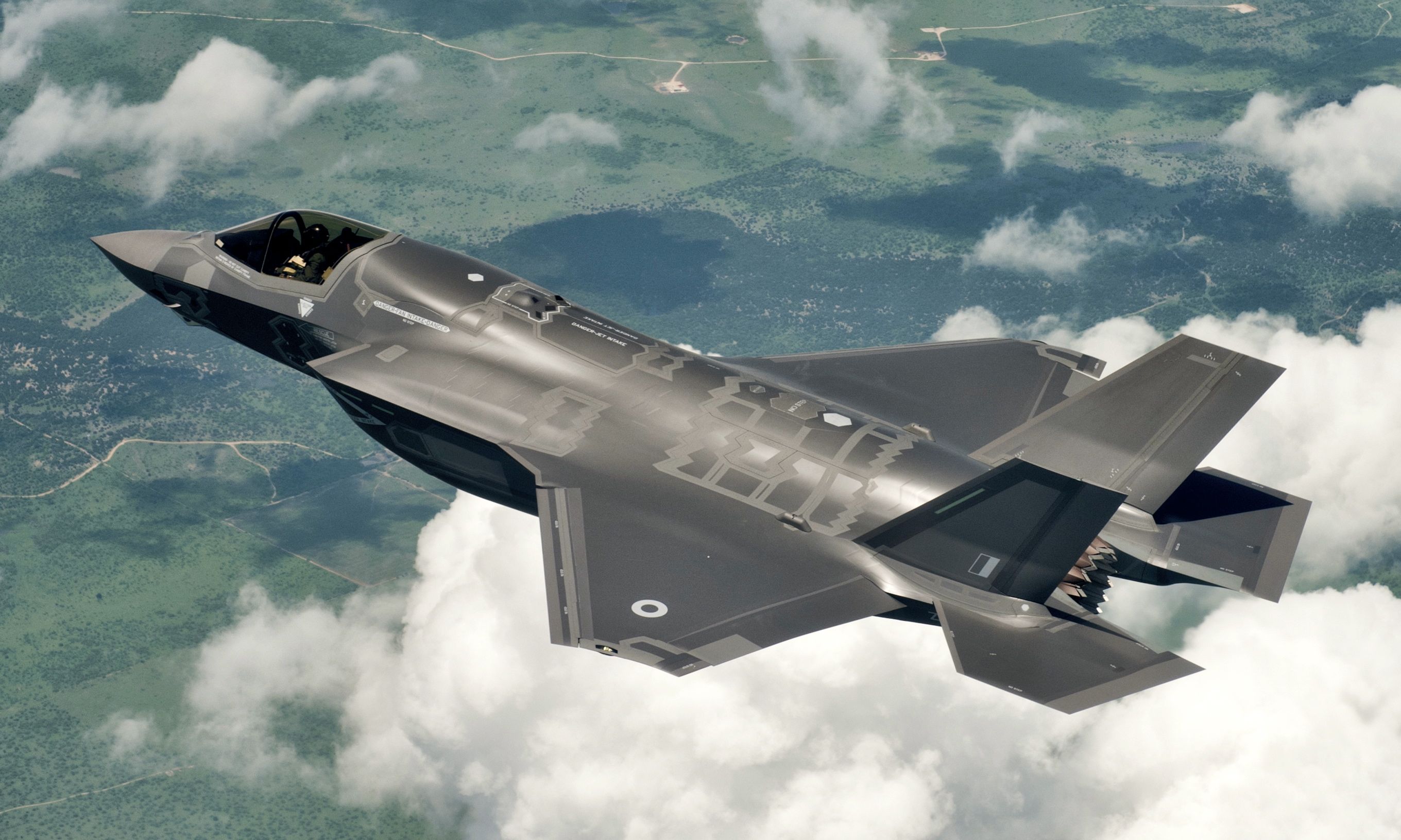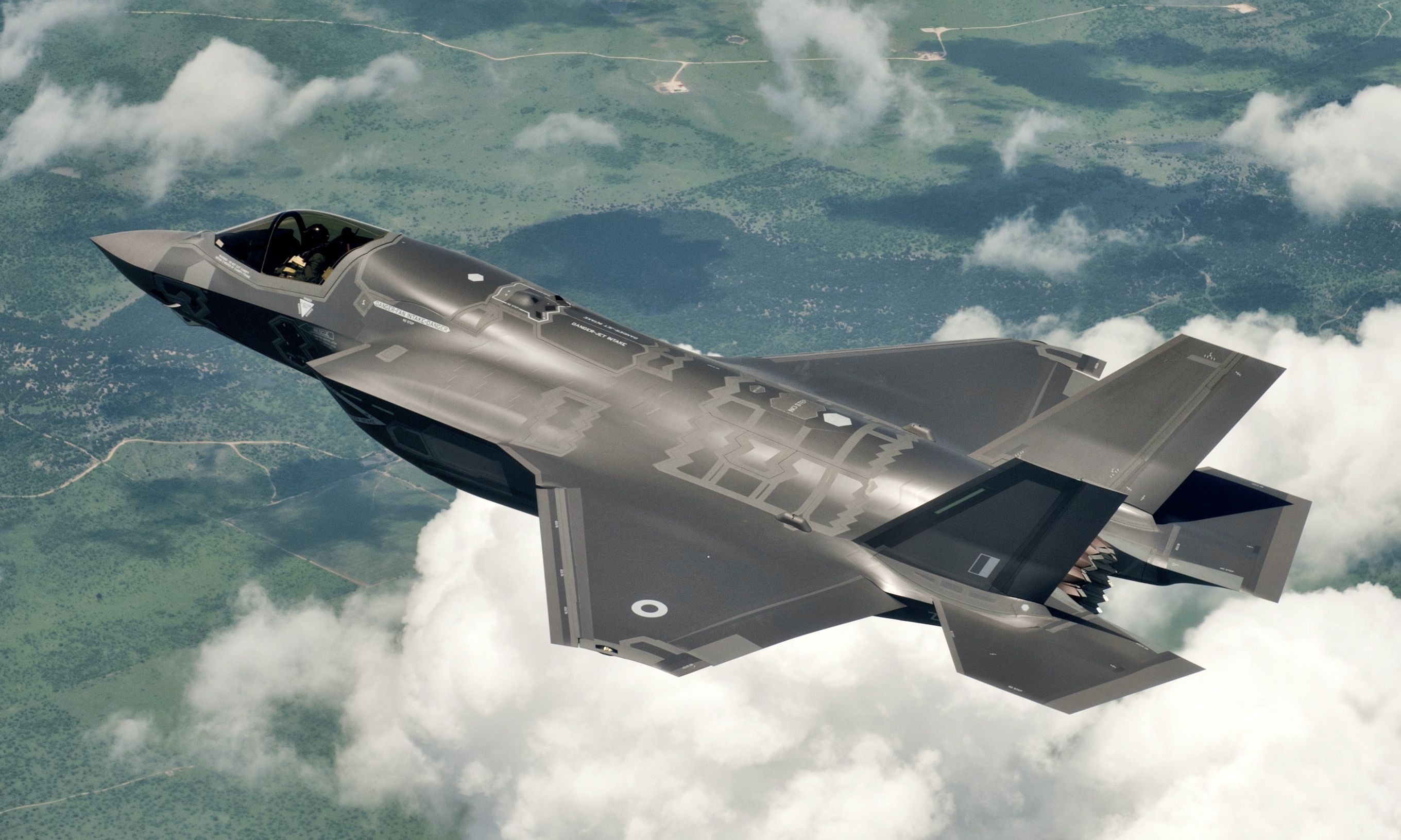2014-11-20 By Robbin Laird
Yesterday I had the privilege to visit the European Air Group based at High Wycombe.
The EAG flies below the radar but is a key asset for the Air Chiefs of 7 major European Air Forces in shape ways to work more effectively together and to get the best value they have from legacy and new assets at the disposal of those forces.
They clearly have grasped the point of the Ben Franklin moment: We all hang together or we hang separately!
We need to learn to work more effectively together to ensure even that our individual national air capabilities are maximized in their effectiveness.

For an airpower aficionado, it is always a pleasure to visit High Wycombe, the home of “Bomber” Harris and the Mighty 8th.
In fact, when one has lunch at the Officer’s Club one quite literally comes face to face with “Bomber” Harris, or at least a sculpture of the famed air chief.
Last year, I visited a small village in France where the remains of one of these B-17s sent to make an impact on the war had found its final resting spot.
It flew from a British base to drive home to the Nazis that the “War of the Atlantic” was not going to be one by sea power alone but by a combined arms effort.
Unfortunately for the crew of this particular B-17, the war was over on July 4, 1943 with all of the crew captured and sent to various points in the Third Reich to spend the rest of the war until their liberation.
Much as the leadership of the bomber force at High Wycombe found innovative ways to shape victory in Europe, the European Air Group is supporting their Air Chiefs to figure out how to prevail in 21st century conflicts.
What is most striking about the EAG is the well thought out organizational structure designed to support the Chiefs and to find ways ahead without the need to have a heavy structure.
It is clearly designed to be agile and to problem solve for how to shape the templates for airpower going ahead, and not simply plodding along in the present.
The head of the EAG is rotational among the Air Chiefs, with the current COS of the RAF now the head of EAG. The Chiefs meet once a year to shape an agenda and to determine the way ahead based on the work performed by the EAG or being shaped for the EAG.
There is a small permanent staff, headed by a Deputy Director and a Chief of Staff for the EAG. I had a chance to interview BG Giacomo De Ponti, from the Italian Air Force, who is the Deputy Director, and Col. Ron Hagemeijer, RNLAF, who is the Chief of Staff. That interview will be published soon and provides a good overview on the working process, accomplishments to date and the way ahead.
The command brief for the EAG can be viewed below and provides a very good overview on its structure, achievements and approach.
The seven European Air Forces involved in the EAG are the following: The UK, France, Italy, the Netherlands, Belgium, Spain and Germany.
Two notable achievements of the EAG are working through the terms of reference and the approach to establishing the European Air Transport Command and to the standing up soon in Italy of a European Personnel Recovery Centre.
In my interview with the Italian Chief of Staff, General Preziosa highlighted the EAG role.
Preziosa highlighted two other important sharing efforts in Europe, which are designed to enhance capability. “The point of sharing is not simply to share; it is to shape a greater capability to act and with greater and more effective means.”
The first is Italian participation in the European Air Group, located at High Wycombe in the United Kingdom.
Here Italian Air Force aircraft – such as the Tornados and Eurofighters – work to be more effectively integrate in coalition operations, as happened with the UK and Italy operating from an Italian base during operations during what the US called Odyssey Dawn.
The second is Italy entering into the European Air Transport Command (EATC) and committed to EPRC (European Personnel Recovery Centre).
“We are contributing our transport aircrafts and new tankers to the EATC”.
Besides Italy is engaged with EAG nations to establish a Personnel Recovery (PR) Centre, based in Italy, in 2015.
This centre is addressing a very important operational function (PR), in order to foster joint-combined interoperability through common approaches and common procedures, under a lead service approach.
I believe those are simple and tangible examples of what is commonly known as pooling & sharing initiatives.”
Now the EAG is looking at the impact of the F-35 upon the evolution of European airpower.
Notably, they are looking at the integration of 4th and 5th generation aircraft in those air forces.
My presentation was an input to their initial seminar to think about the way ahead and to shape practical steps to think through and shape the impact of F-35 on European airpower.
My briefing can be found here:
I concluded by posing these key questions as being highlighted by the 4th-5th generation interactions in the renorming of airpower:
- How can coalition partners work more effectively together?
- How might coalition partners realistically attenuate the key barriers to more effective operations?
- In the course of modernization, what are the most promising opportunities to shape more effective coalition operations?

And suggested that some of the key themes moving forward are as follows:
- The Challenge of Cultural Change
- Working the Machine to Machine Relationships
- Reshaping C2
- Shaping a Combat Cloud
- Fostering a Weapons Revolution
- Collaborative Long and Short Range Strike
- Tron Warfare
- Robotics and Its Impacts
- Managing ROEs and Strategic Surprises
- Managing Three Dimensional Battlespace
In short, the significant role of airpower played today will be enhanced as concepts of operations are reshaped by consideration for how to operate in an extended 360-degree battlespace.
As Admiral Scott Conn put it in a recent interview:
For me, it is about expanding the battlespace and training with regard to how to do this.
We are developing the means to push out the battle space and our ability to find, fix, track, target and engage the threat.
The F-35 will bring enormous capability in this area.
Clearly, the EAG gets this.
It is not simply about adding a new platform; it is about redesigning the concepts of operations to get the full collaborative capabilities out of European forces operating and leveraging fifth generation to enhance overall combat capabilities.
It is not about a new platform; it is about a new way of conducting operations.
High Wycombe led the way in understanding the impact of bombers and fighter escorts in reshaping warfare; now the EAG at High Wycombe is doing something similar with regard to reshaping 21st century airpower.
Editor’s Note: For a look at the B-17 lessons learned for today’s uphill struggle to innovate with regard to airpower see the following:
https://sldinfo.com/remembering-the-b-17-and-its-crews/


